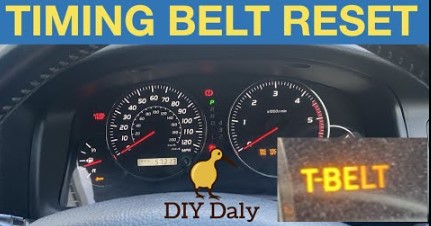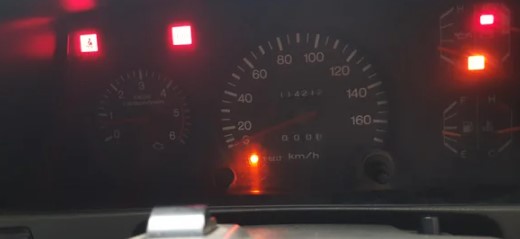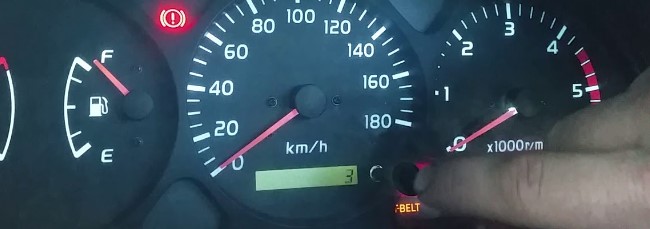The dashboard timing belt warning light is an important indicator of engine health that should not be ignored. It is designed to alert drivers when something within the car’s engine isn’t functioning properly, and if it goes unheeded can lead to serious damage down the road. This blog post will explore what this warning light means and how best to respond in case it appears on your vehicle’s dashboard. Taking prompt action in response to this signal can help ensure proper care for your car’s engine, as well as minimize any potential long-term consequences from ignoring the warning.
What the Dashboard Timing Belt Warning Light Means?
If a vehicle has a dashboard timing belt warning light, it signals that the timing belt needs to be immediately replaced. This component is essential for the engine’s proper functioning and if it is damaged or broken, the engine will not start. The warning light typically appears as an orange or red sign resembling a picture of a timing belt. If this alert occurs, drivers should take their car to an automotive specialist without delay in order to replace the part as soon as possible.
When to Check Your Timing Belt?

The timing belt is a crucial component of an engine, and it should be inspected on a regular basis. The timing belt connects the crankshaft to the camshaft and synchronizes the opening and closing of valves so that they occur at precise intervals. Without a functioning timing belt, an engine can experience decreased performance or even failure due to misalignment between its internal parts.
It is recommended that the timing belt be checked every 30,000 miles and replaced every 60,000 miles. If these checks are neglected, the timing belt can break which will cause the engine to seize up. In addition to this issue, a broken timing belt may result in further engine complications if not addressed immediately. Therefore it is important to keep an eye on its status for optimal vehicle performance.
It is essential to take immediate action when a dashboard warning light for the timing belt is illuminated. To be sure that your timing belt is in good condition, it is important to regularly check it as instructed in the owner’s manual. Postponing an inspection or replacing of the timing belt can lead to serious engine damage and should be avoided at all costs.
How to Check Your Timing Belt?
It is important for car owners to be aware of when their vehicle’s timing belt needs replacing. Depending on the make and model, most timing belts usually need to be replaced between 40,000 and 100,000 miles. It is recommended that car owners consult their vehicle manual or a trusted mechanic in order to know when it is time for a replacement.
If the “check engine” light of a car comes on, it is important to check with a mechanic as soon as possible. This can be an indication that the timing belt needs to be replaced, although there could also be other causes for this warning signal. It is important to have any issue addressed promptly in order to keep a vehicle running efficiently and safely over time.
If a strange noise is heard coming from the engine area, it may be an indication that the timing belt needs replacing. It is important to have regular maintenance performed on vehicles in order to ensure that all components are working correctly and efficiently. If any signs of wear or damage are noticed, they should be addressed as soon as possible before further damage occurs.
How to Replace Your Timing Belt?

It is important to replace your car’s timing belt when its warning light turns on. To do so, it is necessary to follow a few steps. Firstly, the right timing belt for the car must be identified; this can usually be found in the owner’s manual or by searching online. Secondly, the old timing belt needs to be removed by loosening bolts and gently pulling off. Thirdly, install the new one and make sure that it is properly aligned before starting up the engine again. Lastly, check oil levels and top up if needed. If unsure of how to change a timing belt or when last replaced, consulting with a mechanic is recommended for best results.
What Happens if You Ignore the Dashboard Timing Belt Warning Light?
Ignoring the timing belt warning light on one’s dashboard is a risky endeavor. The timing belt is an integral component in a vehicle, as it synchronizes the engine’s valves with the pistons and ensures they open and close at appropriate times. If it snaps, it can cause the engine to cease operating which could lead to costly damage.
Ignoring the timing belt warning light on the dashboard of a car can lead to serious engine damage. The timing belt is an essential component of the engine, and if it fails, the entire engine may fail as well. Additionally, failure of this part may cause other parts in the engine to malfunction or even break down. It’s important for drivers to be aware that failing to heed this warning could result in costly repairs or complete replacement of their vehicle’s motor.
The dashboard timing belt warning light is an important safety feature in any car. It is designed to alert the driver when their car’s timing belt needs to be replaced, which can help prevent potential engine damage. This repair is relatively simple and inexpensive, but it should not be ignored. To keep your vehicle running smoothly for years to come, it is recommended that you have the timing belt replaced as soon as possible if this warning light appears on your dashboard.
